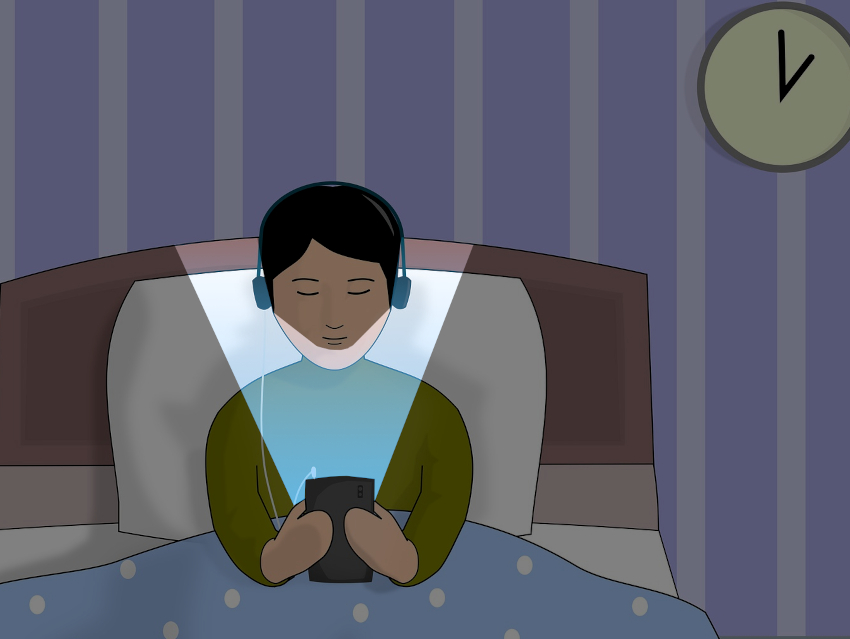Light-emitting diode (LED)-based lights are popular because of their low energy consumption and long lifespan. Inside the bulb, an LED chip converts electrical current into high-energy light, including ultraviolet (UV), violet, and blue wavelengths. A cap that is placed on the chip contains multiple phosphors — solid luminescent compounds that convert high-energy light into lower-energy visible wavelengths. Each phosphor emits a different color, and these colors combine to produce a broad-spectrum white light.
Commercial LED bulbs use blue LEDs and yellow-emitting phosphors, which result in a cold, bright, white light similar to daylight. However, this LED light does not change throughout the day like natural light, which becomes warmer in the evenings. Constant exposure to cold, blue-tinted LED lights can disrupt the production of sleep-inducing hormones, such as melatonin, and affect the sleep cycle. It has also been linked to cataract formation and other eye diseases. To create warmer LED light for nighttime use, red-emitting phosphors have been added, but this only masks the blue hue without getting rid of it.
Jakoah Brgoch and Shruti Hariyani, University of Houston, TX, USA, have developed a prototype LED that reduces the blue component instead of masking it, while also rendering colors similar to their appearance in natural light. To achieve this, they synthesized a new blue luminescent crystalline phosphor, Na2MgPO4F:Eu2+, which can be excited by a violet LED. The phosphor was prepared via solid-state reaction of Na2CO3, MgO, NH4H2PO4, MgF2, and Eu2O3 at 825 °C. It is stable in the presence of water.
The team fabricated a prototype lighting device with a 405 nm violet-light LED covered by a silicone cap containing the new phosphor, blended with the red-emitting and green-emitting phosphors Sr2Si5N8:Eu2+ and β-SiAlON:Eu2+. It produced the desired bright warm white light while minimizing the intensity across blue wavelengths, unlike commercially available LED light bulbs. The prototype rendered the color of objects almost as well as natural light. However, the researchers point out that more work needs to be done before it is ready for everyday use.
- Advancing Human-Centric LED Lighting Using Na2MgPO4F:Eu2+,
Shruti Hariyani, Jakoah Brgoch,
ACS Appl. Mater. Interfaces 2021.
https://doi.org/10.1021/acsami.1c00909


